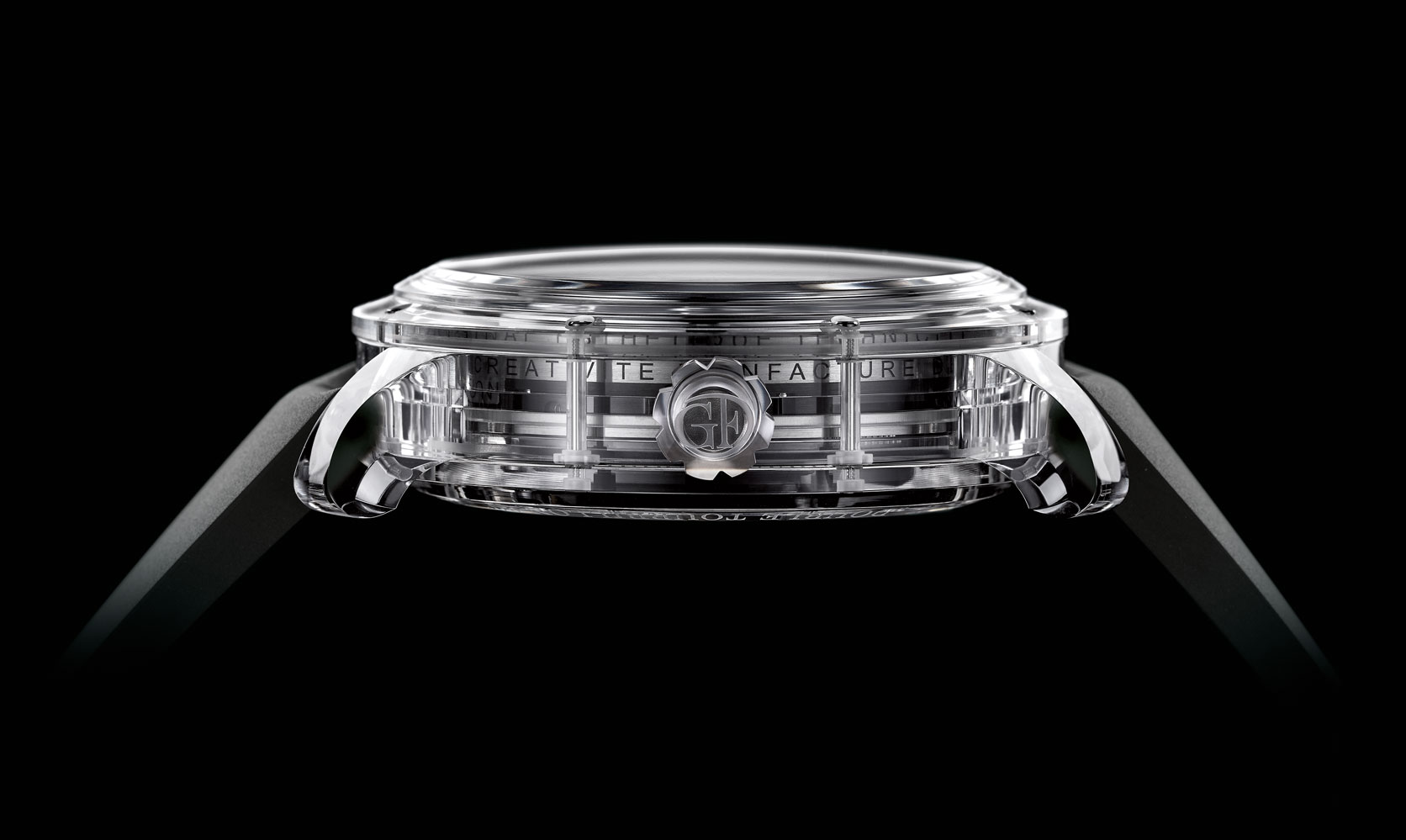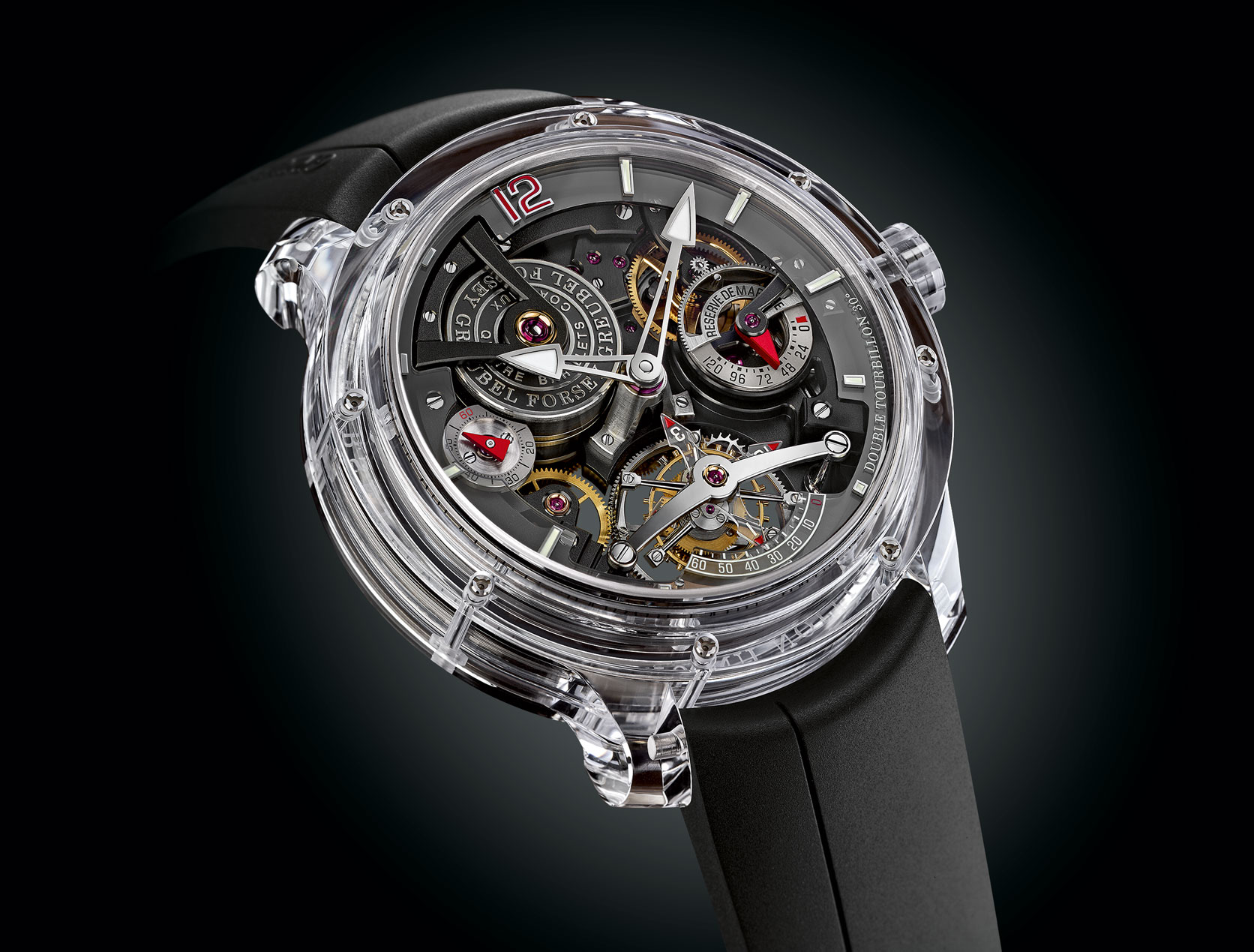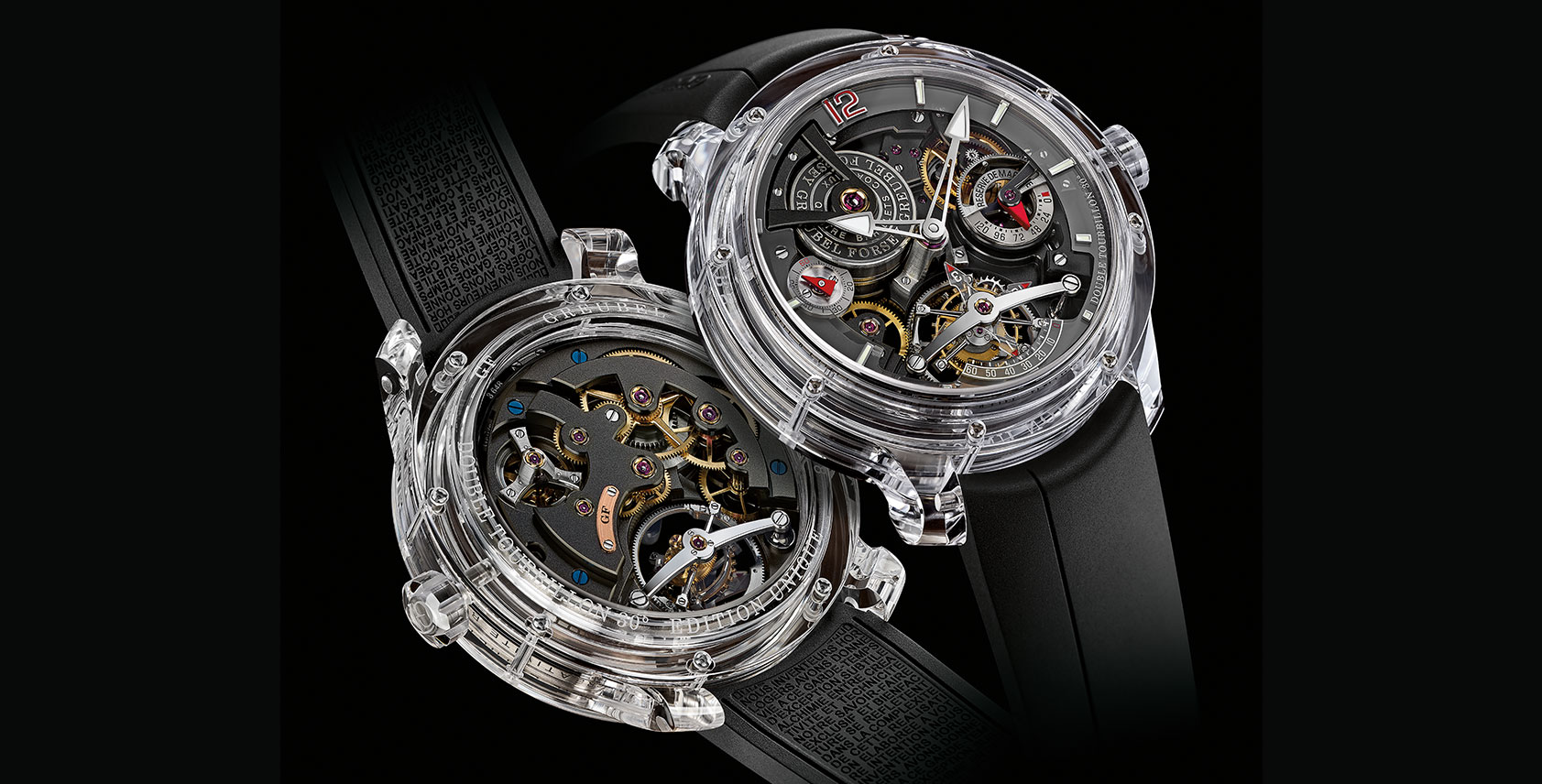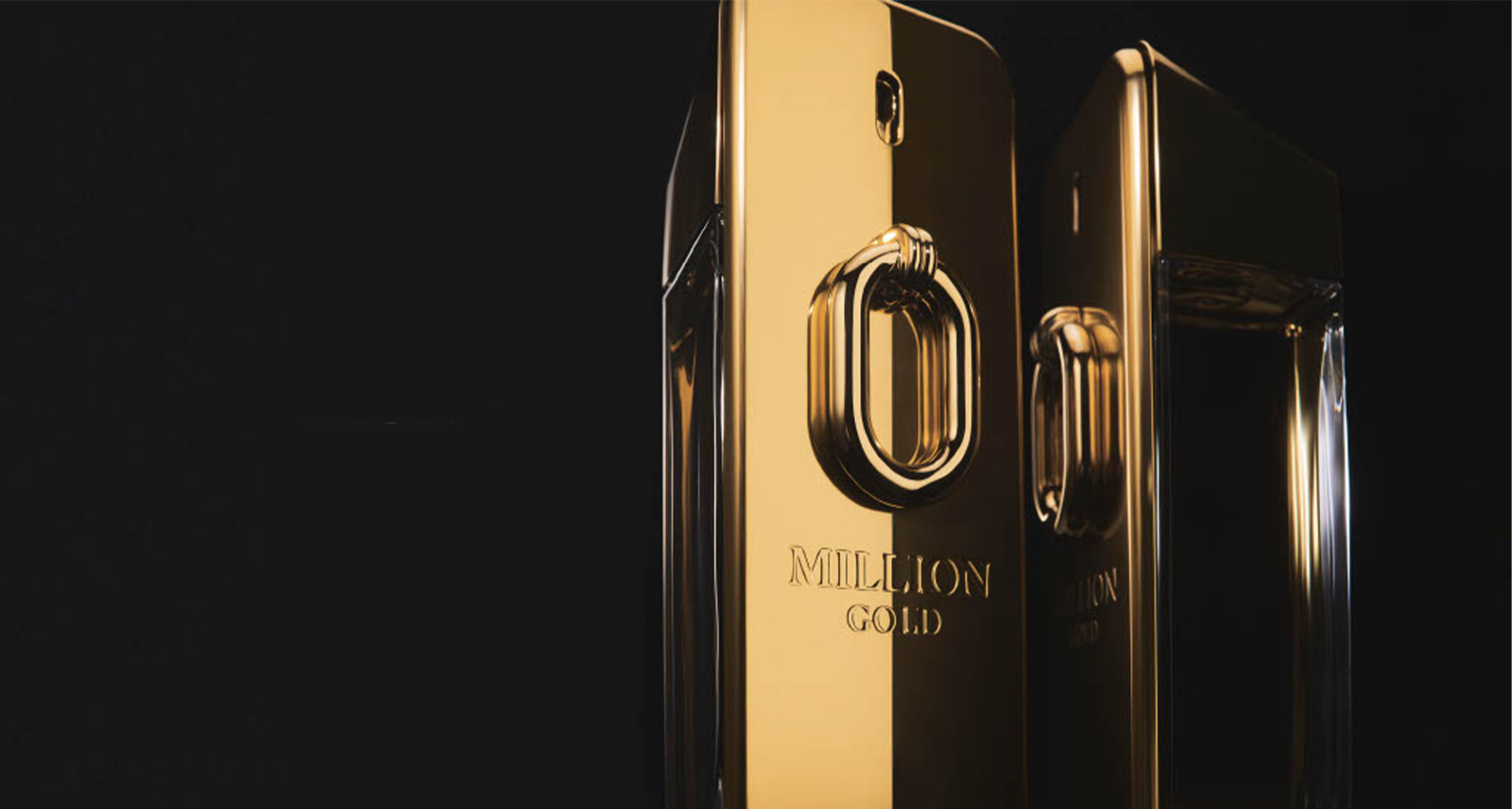How Greubel Forsey Forged a Transparent, Million-Dollar Watch
Technical innovation is a core value for Robert Greubel and Stephen Forsey. It was something they obsessed over in the ’90s, when the masterful duo worked together creating new watch complications for the Swiss company Renaud & Papi. So when they decided to start their own watch brand in 2004, they understood how they’d make their mark.
Their first timepiece saw the birth of their Double Tourbillon 30 Degrees — named for the 30-degree offset between the two tourbillons, one rotating at 60-second intervals, the other at four-minute intervals, a design meant to counteract the effects of gravity on the timekeeping mechanics inside. It was an unprecedented feat of watchmaking — and since then, watch aficionados have seen a regular onslaught of technically and visually compelling timepieces surface from their workshop in La Chaux-de-Fonds.

Given this obsession with breaking new ground, it was only a mild surprise that the duo chose Silicon Valley as the location to showcase their entire collection for the first time in the US last winter. They could have chosen a more traditional American watch industry hotbed, like New York or Miami, but the thinking was the tech mecca would be filled with like-minded individuals, disruptors who share an obsession with innovation. Plus, as it turns out, a number of tech entrepreneurs are serious watch collectors. Given that Stephen Forsey still views the brand as a startup, producing no more than a few hundred watches each year, he’s quick to bond with the best-or-nothing mentality that permeates the Valley. So, by his standards anyway, the presentation was a resounding success.
Forsey and Greubel are, of course, not alone in their pursuit of innovation. The upper echelon of watchmaking is always looking for new ways to challenge what’s possible in their craft. When it comes to movements, the last decade has seen things that classic watchmakers could only have dreamed of. Greubel Forsey launched the Quadruple tourbillon; Hublot’s LaFerrari used 11 series-connected barrels to create a wristwatch with a power reserve of 50 days; HYT started using a fluid-feed system to indicate time; and Christophe Claret built a minute repeater that can emit a Westminster chime (think Big Ben on your wrist). The scary thing? These four examples are just the tip of the iceberg. The more crowded the field, the less opportunity there is to stand out.

(L-R) Robert Greubel and Stephen Forsey
But, as with the tech titans in Silicon Valley, invention is less about finding a space to get noticed and more about seeing opportunities where others don’t. That’s why in recent years the new battleground for haute horology disruptors is in finding and exploiting alternative case materials — especially transparent ones. The trend started in 2012, when Richard Mille first came to the table with his sapphire-cased tourbillon split-seconds chronograph. Then came Hublot’s two sapphire-cased gems, including the Big Bang Unico Sapphire chronograph as well as the jaw-dropping MP5 LaFerrari Sapphire, which uses the insane 50-day power reserve mentioned above, and Bell & Ross’ BRX1 Tourbillon Sapphire. But Greubel Forsey raised the bar.
Sapphire display casebacks have been around for ages, but they’ve had a resurgence lately, along with tastefully executed skeletonized movements, too. There has long been a fairly clear and defined split between traditionalist and contemporary watch collectors. The latter — those hunting for a piece unlike anything else on the market — are the target demographic here. The same enthusiasts and collectors that have an affinity for independent brands like MB&F and URWerk are drawn in by the ingenuity and creativity that goes into modern watchmaking. Within that sphere of watch collectors who aren’t concerned about budget, having a watch with a sapphire case becomes the new trump card — other than Hublot’s Big Bang UNICO Sapphire, which was launched in a series of 500, the other sapphire watches on the market thus far are extremely limited in production.

The reason behind this remarkable scarcity is simple: as a watch-case material, sapphire is brutally difficult to work with. It is one of the strongest, most impenetrable stones on the planet, which is why the watch industry has adopted it as the go-to for watch crystals. But it’s also a temperamental stone; strike it the wrong way and it’s done for. The ability to cut and finish pieces of sapphire the size of watch cases is a fairly new technical feat — watch cases require sharp angles, smooth curves, delicate bevels that (especially at this level of watchmaking) have to be absolutely perfect. When Greubel Forsey set out to build the Technique Sapphire, they hadn’t made a firm decision on how many watches they were going to build, as every time a tool touches the sapphire block there’s a risk of it finding a weak or imperfect corner of the stone that would cause it to crack, sending the watchmakers back to square one. “The challenge was when they start off with five sapphire blocks, how many will make it to be finished? The objective is one, maybe two, but it’s an unforgiving material that can even explode in the final polishing.” said Stephen Forsey in a recent interview. “You have to get these complex forms ground and polished to get to our level of finish, and there’s no room to manoeuvre.”
Greubel’s sapphire case is a logical move. The brand builds some of the most visually (and technically) impressive movements on the planet, and a clear case allows its wearer near unfettered access to admire the Technique Sapphire’s stunning complication from every corner. When looking at the few brands that are playing along with the trend, there are a few key points where Greubel stand out.
For starters, when Greubel started designing the sapphire case, they chose one of the toughest executions possible. Rather than bolting a number of pieces of sapphire together the way we’ve seen from Hublot and even Mr. Mille, Greubel’s case is one solid piece of sapphire sealed by a top crystal and caseback — a relatively traditional design forged out of one of the most difficult materials in the industry.

One of the biggest challenges of their design is one of its most innocuous details: the curved case lugs. As the thinnest detail on the case, they’re also the most susceptible to failure during the heat and stress of manufacture. The entire process can rapidly stretch past 1,000 hours from raw block to complete case and, unlike machining metal, every cut has the potential for catastrophic failure. This is precisely why sapphire-cased watches are as rare and expensive as they are.
When combined with Greuber Forsey’s trademark movement, that 30-degree tourbillon they launched in 2012, the sapphire watch becomes a true masterpiece, both technically and visually. Aside from the prominent tourbillon at 6 o’clock and compact power reserve indicator at 3 o’clock, a big part of this movement’s appeal is its stunning visual depth. From its tall, arching tourbillon bridge, which sits just below the handset, through the exposed bits of geartrain that shine in stark contrast to the movement’s ADLC-coated main-plate, there’s a whole lot to take in.
A set of five watches has been produced — all destined for the US market. Forsey may see kindred spirits in Silicon Valley, where chasing the Never Been Done is the status quo. But even the boldest app has nothing on these watchmakers. Imagine if inserting a final piece of code or tweaking some basic functionality caused their entire system to fall apart. Disrupting would become a lot harder. That’s what Greubel Forsey, and the few other trend-setting time-keepers are dealing with, weighing ambition against fragility and inevitable frustration. Every step forward is like walking on thin ice — or, actually, sapphire. Luckily, the risks are worth it.










